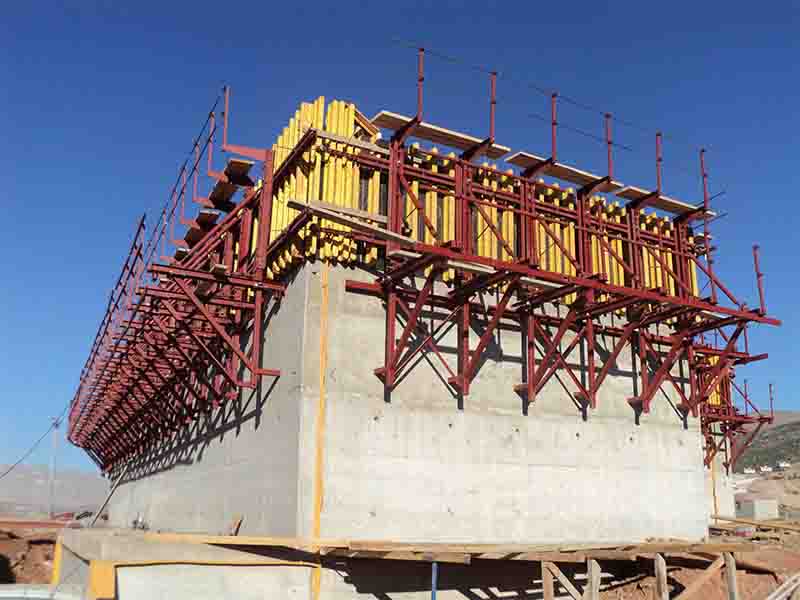Climbing Formwork
Climbing formwork is a special type of formwork for large vertical concrete structures. Climbing formworks are an effective solution for structures that require a stamped concrete wall or have a very repetitive form.
Climbing formwork can move on its own using hydraulic or electric jacks, commonly known as self-climbing formwork, or they can be relocated with cranes and other equipment. A sliding form called a slipform is also used, but it moves continuously rather than periodically like a self-climbing formwork. The self-climbing mold stays in place during the pouring process. Crane jump forms are typically used in buildings of five or more floors; Fully self-climbing jump form systems are generally preferred in structures with more than 20 floors.
Climbing Formwork Features
Climbing formworks must be installed or rented with the following components:
- Platforms for concrete workers
- Wall formwork material and parts
- lifting beam
- Additional work platform
- suspension platforms
Thanks to the platform created on the climbing consoles fixed to the concrete with climbing formwork climbing hangers, a surface is obtained on which the curtain formwork will sit, as well as providing a safe and secure working area. It is used in high structures that cannot be poured at once.
SYSTEM FEATURES:
The fact that the climbing and its formwork are securely fixed to each other allows both of them to be moved as a whole or separately with the help of a crane. This saves a lot of time. There are two types of climbing consoles available.
- Movable climbing console
- Fixed climbing console
Production is carried out in gas metal arc welding robots in accordance with EN ISO 3834-3 quality standards. The solution suitable for your formwork project is made by GÜRBÜZ İSKELE.
How to Assemble Self-Climbing Formworks?
Often this type of formwork is made of steel elements, concrete formwork panels are attached. Some are supported on rollers. After the concrete walls are poured, they are released and removed from the wall. If using self-climbing formwork then jacks lift the frame to the next level or to the next area where it will be used. The process goes pretty fast.
Once the climbing formwork is in place, the panels are closed and the next concrete wall is poured. Normally, the cycle lasts 3-5 days. Faster build can be achieved.
Where is Climbing Formwork Used?
Highly recommended for super tall builds such as:
- skyscrapers
- bridge poles
- Airport Control Towers
- tall buildings
- Elevator Shafts
- silos
Climbing Formwork Benefits
- Usually does not require a crane to move it, reducing your cost
- Increases construction speed by allowing vertical and horizontal sections of a building to be constructed simultaneously
- Minimizes labor time and has a better productivity rate
- High security systems as adjustment and removal work is less than conventional systems
- Does not need additional supports for formwork
- Can be used in almost any weather condition
- Provides a space to be used as scaffolding
- High quality surfaces can be achieved
- Can sustain strong winds
- The mold system is easy to clean and reuse, producing little waste compared to conventional systems
- Other protection systems (screens) can be hung from a large jump form and climbed with the system
- Some of these systems can be installed in such a way that even a concrete pump can be used in the same area and place.
- Long lengths can be achieved by combining different sections for each specific project
- Some formwork systems can be used at an inclined angle
- Once the learning curve has passed, the performance will be optimized and the job will be completed faster
- These systems minimize the use of scaffolding and temporary work platforms

